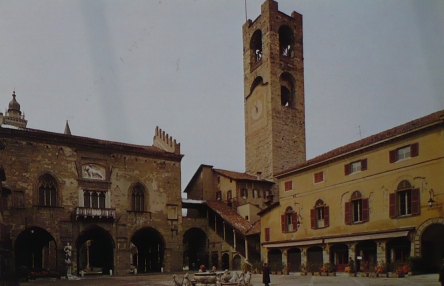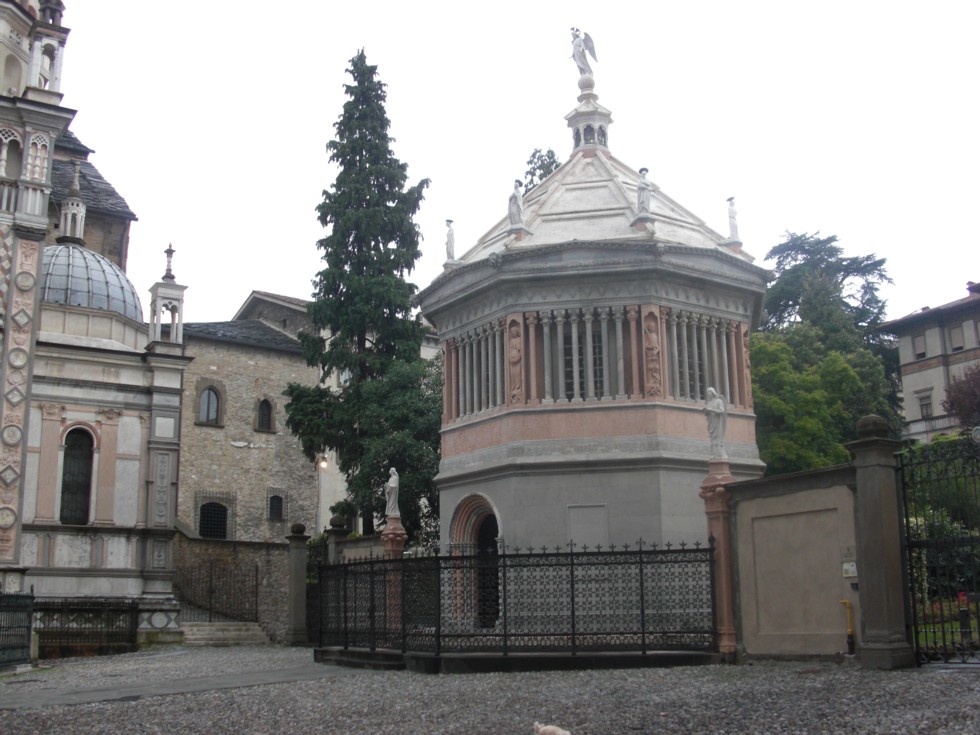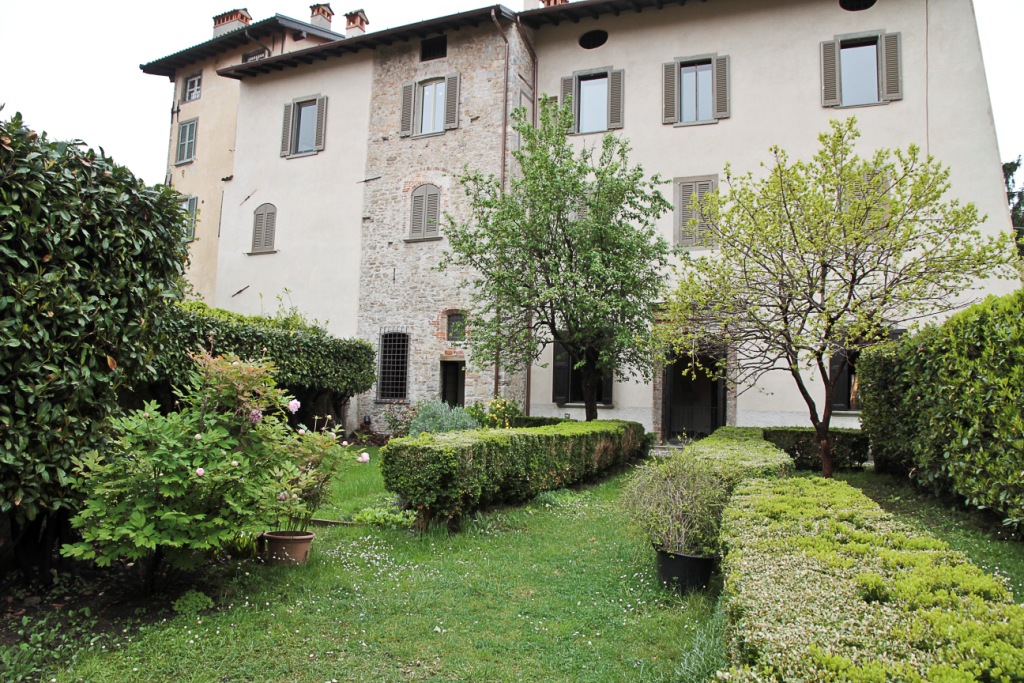Landschlacht, Switzerland, 7 December 2017
First impressions are lasting.
And one rarely gets a second chance to make a “first” impression.
Today, despite my desire to remain abed at home and nurse my damnably durable cold – with all its joyless aspects of stuffed nose, scratchy throat, hoarse voice, congested chest, sinus headaches and resulting sleepless nights and exhausted days – I need to emerge from my cold-induced hibernation and seek supplies of food and medicine for both myself and the wife.
I will go to Konstanz, Germany, a half-hour distance from home, to buy these goods, but visiting Konstanz will not be a hardship for me, for the moment I laid eyes on the city ten years ago I liked it.

Above: Flag of Konstanz
I love its well-preserved Altstadt.
As Konstanz straddles the Swiss border on the southern side of the Lake of Constance (Bodensee), the likeable University town came out of World War II almost unscathed, ensuring the survival of the Altstadt.
Though Konstanz has Roman origins, it has a medieval feel to it.
I love Konstanz´s waterfront that hugs the Rhine and overlooks the Lake – a pleasant promenade that lovingly links aged buildings, gorgeous greenery and startling statues.
The southern end of the promenade with its clattering sails of the yacht harbour and several old warehouses that have been converted into a casual restaurant and shopping district ….
The Council Building (Konzilgebäude), a conference and concert hall that healed the Great Schism in the Catholic Church by replacing three popes with one (1414 – 1418)….

Above: The Konzilgebäude, Konstanz
Imperia, the imposing nine-metre high rotating statue of a voluptuous prostitute holding men, be they Emperor or Pope, in the palms of her hands….

Above: Imperia, Konstanz
The Island of Constance with another statue, this one commemorating airship inventor Count Ferdinand von Zeppelin (1838 – 1917), near a former Dominician priory and now a five-star hotel….

Above: Zeppelin Monument, Konstanz
The conical red-tile 15th century Rheintorturm (the Rhine Gate Tower) and the Rheinbrücke (Rhine Bridge) where the Rhine meets the Lake….
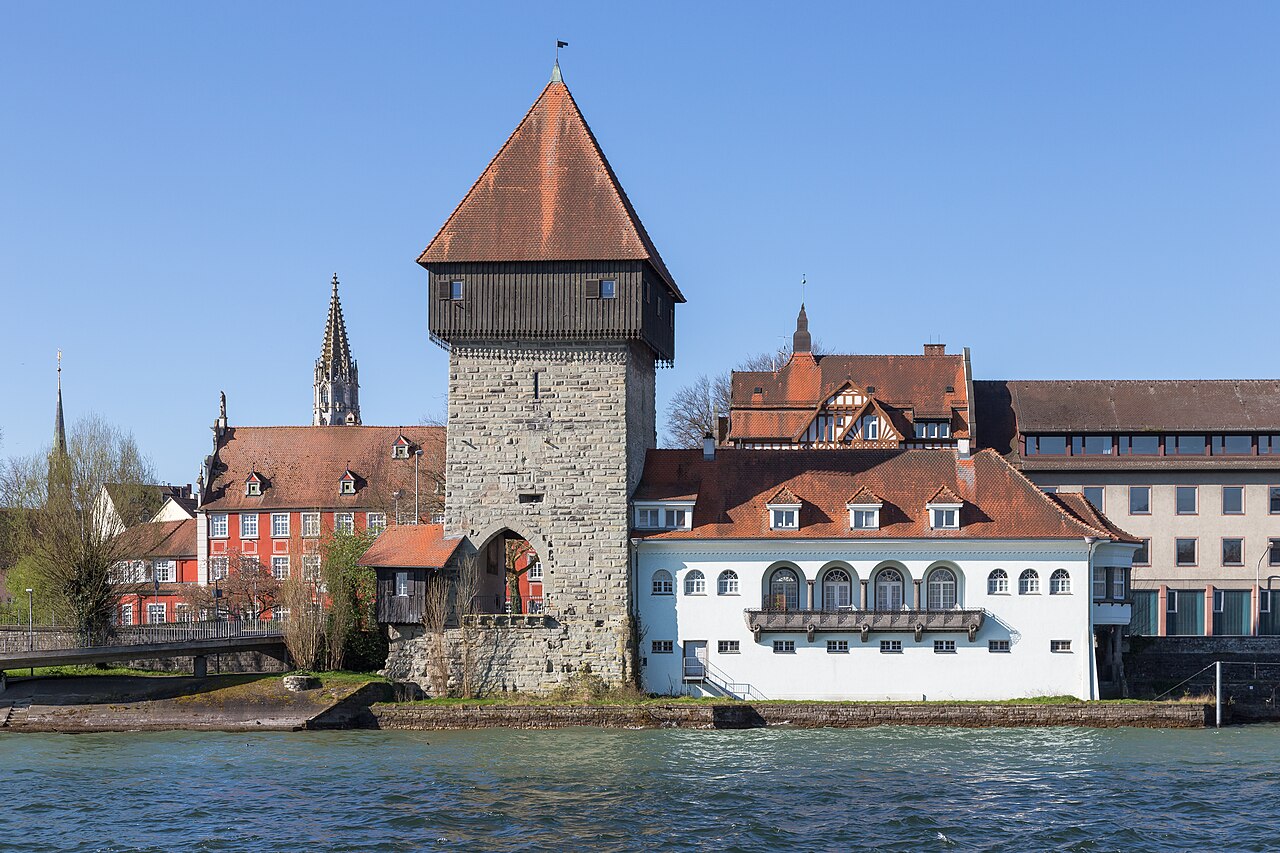
Above: Rheintorturm, Konstanz
The Münster (cathedral) built of soft sandstone in a regal romantic melange of elegant Romanesque and serious Gothic styles where pre-Reformation Czech religious reformer Jan Hus (1370 – 1415) stood trial and was sentenced to be burnt to death….

Above: Konstanz Münster

His museum, the Hus Haus is surprisingly interesting if a person lingers long enough to discover why Hus was a man truly before his time and a figurehead of Czech identity….
The alarmingly modernist Kulturzentrum am Münster with ever-changing exhibits contrasts with the Rosgartenmuseum, the town´s history museum in an old butchers, grocers and pharmacists guidhall whose greatest treasure is Ulrich Richental´s Chronicle of the Council of Konstanz, a beautifully illustrated work including an extremely graphic rendition of the burning of Hus.
The State Archeological Museum (Archäologisches Landmuseum) with proud lions´ heads, deities and sea leopards from Roman times, along with a local 15th century merchant ship and some canoes from 650 AD….
But none of this would appeal to me had my first impression of the place been negative, for a rejection of Konstanz would probably have meant a rejection of nearby Münsterlingen Thurgau Kantonspital (Cantonal Hospital) where my wife works and the adjacent village of Landschlacht where we have resided these past seven years.
It was easier to explore the area because our first impressions of the area were positive.
We found out this summer that the opposite effect is also true…..
Bergamo, Italy, 3 August 2017
It should have been love at first sight, and maybe for others it can be, but for us….
Not so much.
I was expecting there to be love, after all Bergamo is a UNESCO World Heritage Site, it reminded me of my favourite Canadian city Quebec City with encircling city walls and an upper and lower town.

Above: Sunrise over Bergamo Alta
Bergamo is the second most visited city in Lombardy.
I expected a humane and compassionate welcome as Bergamo is a humane city where the 2017 43rd G7 Summit on Agriculture was held, committing the Group of Seven to reduce hunger for 700 million people worldwide by 2030, to strengthen cooperation for agricultural development in Africa, to combat food waste and to ensure price transparency.

And, surely, I thought, things in Bergamo had changed since Mary Shelley´s visit in 1840:

Above: Mary Wollstonecroft Shelley (1797 – 1851)
Bergamo, 10 September 1840
“It was a pleasant but warm drive.
Oh, how loath will the Austrian ever be to loosen his grip of this fair province, fertile and abundant in its produce, its hills adorned with many villages and sparkling with villas.
These numerous country houses are the peculiarity and beauty of the region,….rendered gay by numerous villas, each surrounded by grounds planted with trees, among which cypresses rise in dark majesty.
The fields were in their best dress, the grapes ripening in the sun, the Indian corn – the second crop of this land of plenty – full-grown, but not quite ripe.
Variety of scene is so congenial that the first effect of changing the mountain-surrounded, solitary lake for the view of plain and village and widespread landscape, raised my spirits to a very spring tide of enjoyment.
We were very merry as we drove along.”
Bergamo, 3 August 2017
Up to this point Mary Shelley could have been predicting our future as we drove from Lecco to Bergamo via Highway 342.
The weather was hot and humid, but air conditioning is a wonderful invention.
Austria was indeed reluctant to loosen their grip on its Italian possessions and the residents of Bergamo would achieve eternal fame in their struggle to be free from their domination.
The cultivated fields were still growing and the countryside still sparkles with the villages and houses Shelley described.
And Ute (my wife) and I were in fine spirits as we anticipated our arrival in Bergamo.
Bergamo, 10 September 1840
“There is a fair at Bergamo.
It has lasted three weeks and the great bustle is over.”
Bergamo, 3 August 2017
There is a festival in Bergamo happening now and it is a Friday night in this festival, though what festival is actually being feted remains unclear.
There is a great bustle all around us and our GPS is distinctively unhelpful and the German translated from his voicebox seems to say:
“Dude, I´m just as lost as you are.”
Once again, our relationship is being tested St. Malo and Dublin style – cities where we navigated streets of no particular logic and fought divorce court angerly, blaming one another for the fine mess we had landed ourselves in.

Above: St. Malo, France
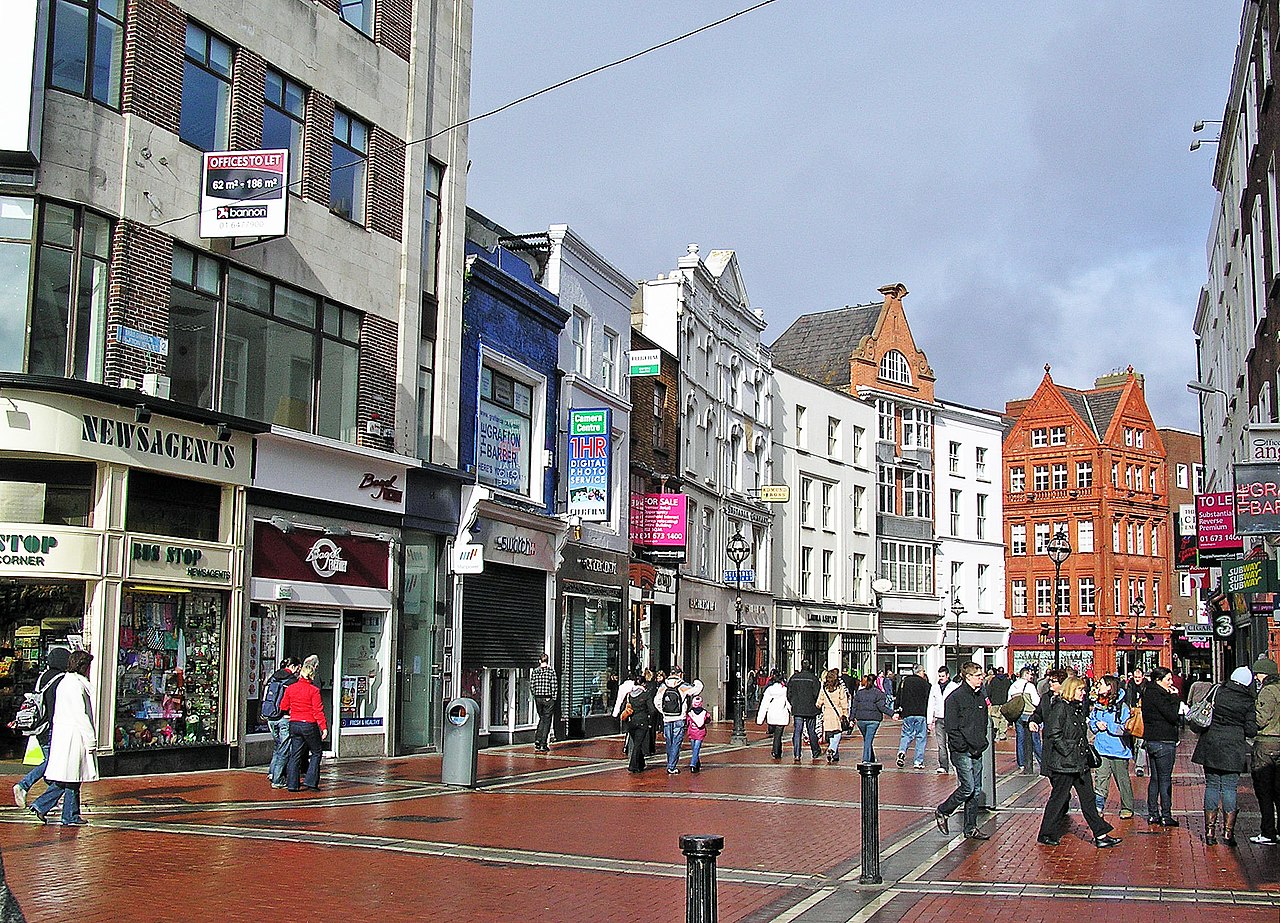
Above: Grafton Street, Dublin, Ireland
We arrived at twilight and it would not be for several hours until we found ourselves a place to park and the location of our hostel type bed and breakfast.
This was coupled with the fact that Ute was breaking the cardinal rule of travelling with a man:
Never let a man grow hungry.
We drove around and around, in and out through Bergamo Bassa – modern lower town – and Bergamo Alta – medieval upper town – in search of parking spots and our bed for the night.

Above: Sunset over Bergamo Alta
We had telephoned and text messaged our hosts a dozen times and we were reassured (falsely) repeatedly that we would easily find a parking spot near the B & B and that the B & B was child´s play to find.
I lost count how many times we seemed to follow the same hill road up into Bergamo Alta, the same crooked alleyways where pedestrians gave us annoyed looks, the same hill road down to Bergamo Bassa.
I can´t calculate the frustrating amount of times we argued about logic versus law, that surely the B & B would not suggest we drive into Bergamo Alta if driving there was not allowed versus her unwillingness to receive traffic fines for illegal entry down signposted forbidden streets.
Did we retrace our routes and our arguments a dozen times?
Twenty?
A hundred?
A thousand?
We were tired and tense.
I was hungry and grumpy.
Ute mentally murdered me a million times.
I silently questioned her sanity several times more.
Three (or was it four? five?) hours later, after we wished death or divorce upon one another, we found a parking spot on the aforementioned, much revisited, hillside road connecting lower with upper Bergamo.
By this point in time we no longer cared if we were allowed to park there or not.
Carabineri, fine us, don´t fine us, unless you tow us, we shall park here.
We climb and weave, climb and weave, through back streets to main streets, dragging far too much luggage with us, for Ute feared that our car might be broken into.
After all, husbands are horses, aren´t they?
Mere beasts of burden?
We arrive at the address and struggle to gain entry.
I am drenched in sweat, my stomach bitterly complains, and my mind rebels against the situation.
We gain entry and find keys waiting for us as per instruction, but no one greets us.
There is no sympathy, no congratulations or commisseration.
There is no air conditioning nor a surplus of electrical sockets for adequate universal light in our room.
Air circulation is open windows allowing bugs to share our bed or a metal fan whose rattle and clatter can be heard and felt within our bones.

Above: Bergamo Alto seen from above
Bergamo, 10 September 1840
“We had been told that the inns are bad.
I do not know whether we have found admission into the best, but I know we could scarcely anywhere find a worse.
The look of the whole house is neglected and squalid.
The bedrooms are bare and desolate and a loathsome reptile has been found on the walls.
The waiters are unwashed, uncouth animals, reminding one of a sort of human being to be met in the streets of London or Paris – looking as if they never washed nor ever took off their clothes, as if even the knowledge of such blessings were strangers to them.

The dinner is inedible from garlic.
Of course, the bill tomorrow morning will be unconscionably high.”
Bergamo, 3 August 2017
We had not been told that Bergamo was in festival mode when we arrived, so it dawned on us how fortunate we were to have booked the B & B months before or we might have found ourselves sleeping in the car.
Our B & B, buried in a back courtyard on Via Colleoni, is perfectly situated within the old town between the Citadella and the Piazza Vecchia, but I cannot find much else positive to praise about our accommodations.
I would not go so far as to suggest that the place is squalid but it did not feel welcoming.
The bedroom was devoid of affection and desolate of affectation, but reduced to beggary as circumstances found us this evening we should have been more grateful.
We weren´t.
I am not certain whether it was the ongoing festival or the fact it was Friday night or whether it was customary for restaurants to be open late, but we found a restaurant open at 10:30 pm on the same street as our B & B.
The waiters and waitresses of Ristorante Damimmo did not seem to be unwashed, uncouth animals, but they also did not seem overly welcoming.
Dinner was edible but not palatable.
For the wife, neither mood nor cuisine induced an appetite.
Especially when we were presented with a bill that was unconscionably high.
We returned to the B & B as dissatisfied as when we first arrived.
The humidity and hot tempers vented made for a long uncomfortable night.

Bergamo, 4 August 2017
A restless night led to an early rising before the scheduled hours of breakfast.
We both awoke with the feeling that Bergamo had failed us and that we desired to linger here as little as possible.
We would wander the streets of Bergamo Alta until it was time to return for breakfast.
Now it must be said that early morning in a city is a fine time to go wandering, for an awakening city seems at its most natural then.

Above: Bergamo Alta
Even though most establishments are closed and few people populate the streets, early morning walking feels like the city is our private playground.
Medieval Bergamo Alta clings to a hill 1,200 feet above the Lombardy plain.
It is one of northern Italy´s loveliest city centre, a favourite retreat for the work-weary Milanese who flock here at weekends seeking solace in the fresh mountain air, seductive lanes and the lively easy going pace of the place.
Bergamo Alta is filled with houses and palaces of fancy Gothic design.
The ring of gated walls are worn, mellow and overgrown with creeping vines and defiant charm.
These walls resisted army after army of invaders who vaingloriously spent themselves without success until the French (ah, those clever French) victoriously stormed the city in 1796, ending centuries of Venetian rule.
Piazza Vecchia is enclosed and encased by an envelope of harmoniously hugging houses with wrought iron balconies and hosting cafés and restaurants and by the palatial Palladian-style civic library.

Above: Piazza Vecchia, Bergamo Alta
Stendhal enthusiastically dubbed the square “the most beautiful place on Earth”, and, to be fair, it is certainly a striking open space to behold, with the Palazzo della Ragione stretching across the Piazza, lending an operatic stage ambiance especially at night under moonlight and lamplight.

Above: Piazza Vecchia at night, Bergamo Alta
Above: Palazzo della Ragione, Bergamo Alta
Court cases were once heard here under the open arcades that form the ground floor, and, following the inevitable guilty verdict, condemned criminals were exhibited here.
The Piazza itself was the scene of joyous celebration in 1797, when the French (ah, those clever French) formed the Republic of Bergamo.
A Tree of Liberty was erected and the square, carpeted with tapestries, was transformed into an open air ballroom in which – as a symbol of the new democracy – dances were led by an aristocrat partnered with a butcher.
We gazed upwards at the massive Torre Civica (or Torre del Companone) with its 15th century bell that tolls every half hour.
Above: Torre Civica di Bergamo
We walked through the Palazzo arcades to the Piazza del Duomo and visited both the Duomo and the Chiesa Santa Maria Maggiore.
Santa Maria Maggiore is a rambling Romanesque church sheltering slews of saints lost amid overabudant over-ornamentation of too much gild, too much paint and statues too ignored.

Above: The Basilica of Santa Maria Maggiore (background) and the Cappella Colleoni (foreground)
Here in this church, a monument to a local legend….
Gaetano Donizetti, the Bergamo-based composer of highly popular romantic comedies with memorable melodies and predictable plots, who died from syphilis here in 1848, is the town´s most famous son.

Above: Gaetano Donizetti (1797 – 1848)
His death caused massive grief.

Above: The tomb of Gaetano Donizetti
His groupies stamped their feet and smashed lyres in misery over the event.
The church is as glitzy as Gaetano was.
This is akin to a cathedral in Vegas remembering Liberace.

Above: Wladziu Valentino Liberace (1919 – 1987)
But class will out, as the Cappella Colleoni next door clearly overshadows the Chiesa in grandeur and extravagance.
This connecting chapel is pastel-coloured marble and twisted columns and mosque-like dome.
Bartolomeo Colleoni, a Bergamo mercenary in the pay of Venice, commissioned the chapel with frescoed ceiling and gleaming gilded equestrian statue.

Above: Bartholomeo Colleoni (1400 – 1475)

Above: Equestrian statue of Colleoni, Cappella Colleoni
Colleoni´s coat of arms on the gate bears a much rubbed third testicle which is supposed to bring the rubber luck.
But biologically true or not, I am not certain how lucky Colleoni´s third testicle was for the man, nor whether I really want to rub another man´s testicles for luck.
And more oddness nearby at the Baptistry outside the Aula della Curia (“the Bishop´s Court”)….
Above: Il Battistero, Bergamo Alta
More frescoes, these of the life of Christ, but one scene quite strange….
Christ judges the damned while holding a dagger, like the sword of Damocles, in his teeth.
Our guidebooks informed us that these places would not open so early.
No one asks for money nor prevents us from taking photos.
There are no worshippers nor clergy about and yet the doors yawn wide open inviting the curious.
The Via Colleoni slowly wakes with pastry shop personnel placing in window displays trays of chocolate and sweet polenta cakes topped with birds.
The Luogo Pio Colleoni is not yet open, so Colleoni´s Bergamo residence is denied us.
Above: Il Luogo Pio Colleoni, Bergamo Alta
Once this was also the headquarters of a charitable institution set up to provide dowries for poor women, for the Venetians ruled that no woman could marry without one.
For why marry a woman if there is no profit in the practice?
The Citadella is also denied us.
Above: Citadella Bergamo
Where once a military stronghold occupied the entire western headland, now remains only buildings housing a small theatre and two museums: archeology and natural history.
Bones interpreted in Italian only, our guidebooks inform us.
But the views of Bergamo Basso and the plains of Lombardy below justify the walk.
There is much we will not see, much we will not learn, in our haste to leave Bergamo and its negative first impact upon us.
We do not learn about the Thurn and Taxis dynasty who are credited with organizing the world´s first modern postal service.

We do not hear about the exploits of the Thousand, many from Bergamo, who aided Giuseppe Garibaldi in liberating the Kingdom of the Two Sicilies and bringing it into the reunified Italian fold.
Thus the reason why Bergamo is the Citta dei Mille, the City of the Thousand.

We do not see the tomb of Enrico Rastelli, a highly technical and world famous juggler who lived and died in Bergamo.

Above: Enrico Rastelli (1896 – 1931)
We may have seen but did not identify which of the paintings in Santa Maria Maggiore were done by Giovanni Cavagna or by Francesco Zucco or by Enea Salmeggia, for the surprise accessibility to the church had us feeling paranoid expecting to be evicted at any moment.
No Bergamese bergamask dancing as practiced by Nick Bottom in William Shakespeare´s A Midsummer´s Night Dream or incorporated into Debussy´s Suite Bergamasque.

Above: Scene from A Midsummer´s Night Dream, in centre wearing the head of an ass, Nick Bottom
No one tells us at breakfast back at the B & B that the famous American electrical engineer and professor Andrew Viterbi was born in Bergamo and somehow it seems the hodge podge assortment of visitors, some from France (ah, the clever French), could not explain Viterbi´s Algorithm better than I can understand it.

Above: Andrew Viterbi
(I don´t.)
Despite the ratio of women at breakfast greater than the men no one speaks of Bergamo´s late Mariuccia Mandelli, one of the first female fashion designers to create a successful line of men´s clothing.
(Am I the only one who reads Wikipedia?)
There are perhaps a thousand reasons to linger in this town, a thousand beautiful things to behold in Bergamo.
But first impressions are lasting and the welcome mat was amiss.
We return back to our car, I once again a heavily laden beast of burden.
No traffic ticket nor broken windows greet us and the car is where and how it should be.
We pack up the car and drive away.
We are soon a thousand metres away and eagerly increase this distance a thousandfold.
Ciao, Bergamo.

Sources: Wikipedia / Google / The Rough Guide to Germany / The Rough Guide to Italy / Lonely Planet Italy / Mary Wollstonecraft Shelley, Rambles in Germany and Italy


